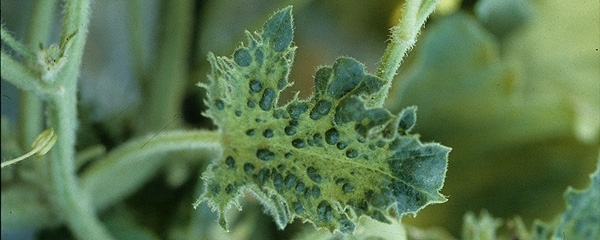
Zucchini yellow mosaic virus (ZYMV)
(Potyvirus, Potyviridae)
ZYMV is a potyvirus transmitted by aphids in the non-persistent mode. It is one of the best examples of viruses emerging in plants. Isolated for the first time in Italy and then in France in the 1970s, it has spread throughout the world in a few years, sometimes causing epidemics of exceptional severity. This recent and rapid dissemination in various types of crops (intensive, extensive, under cover, open field) and very varied ecosystems (temperate, tropical, Sahelian, island) is attested by the fact that ZYMV causes very strong symptoms and characteristics: this virus could not therefore have gone unnoticed before. Molecular evolution analyzes trace the appearance of ZYMV to a recent period, between 120 and 770 years, but its place of origin remains unknown.
ZYMV is now reported on cucurbits in virtually all of their production areas around the world. However, its frequency can vary a lot depending on the region. Regularly encountered in tropical or subtropical regions, its epidemics are more irregular in temperate countries such as France . A survey carried out from 2004 to 2008 in the main French production areas showed that ZYMV was only present in 11% of 2,660 samples analyzed, mainly on squash (23% of samples tested), zucchini (14%) and melon. (8%), and to a lesser extent on cucumber (3%). In areas where this virus was detected, outbreaks were generally severe, with a strong impact on yield.
ZYMV causes very severe symptoms of mosaicism, yellowing, stunting and deformity on the foliage of virtually all cucurbits. It also causes discolorations and spectacular deformation of the fruits which are then unmarketable. Early attacks can lead to total loss of crops.
ZYMV particles are flexible and measure approximately 750x12nm.
Many viruses cause mosaics in cucurbits, which often makes visual diagnosis difficult. However, the symptoms of ZYMV in melon or zucchini are quite characteristic and can sometimes allow rapid identification of the virus. Commercial kits ELISA diagnostic are available as well as primers for molecular diagnostics (RT-PCR). Recently, rapid detection kits have been developed: they allow the presence of this virus to be revealed in a few minutes, directly in the field.





